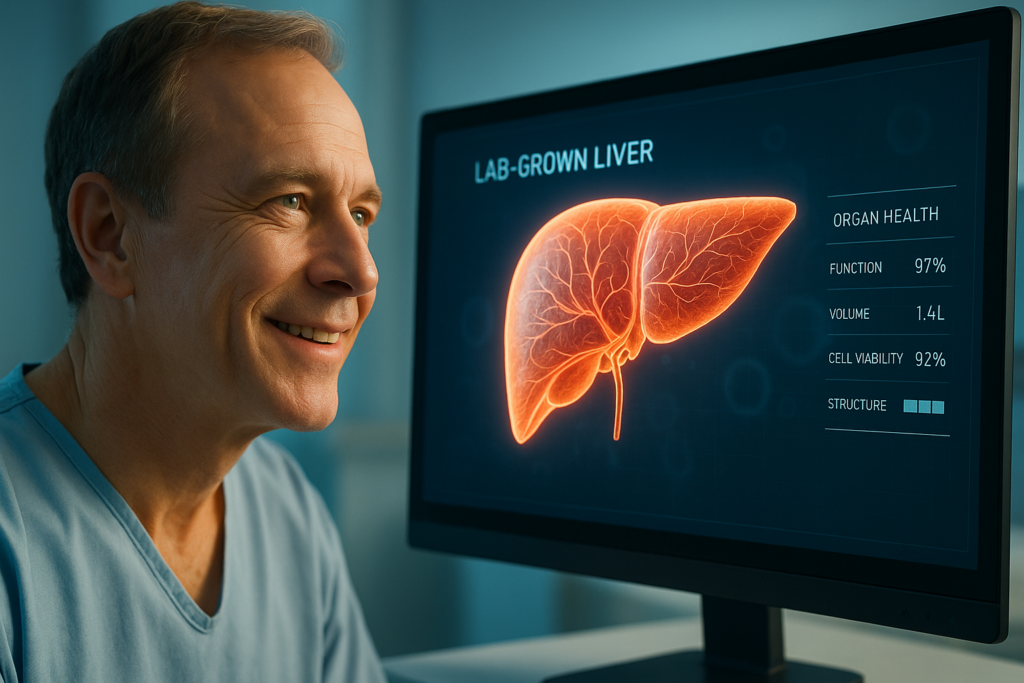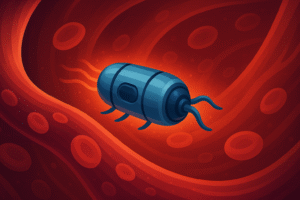Fun fact: Scientists have already 3D-printed working mini-hearts that beat just like the real thing!
Imagine being told you need a new heart, liver, or kidney—and instead of waiting on a long donor list, your doctors simply grow one for you in a lab. Sounds like science fiction, right? But this incredible idea is already inching its way toward reality.
In this blog, let’s dive into the provocative question: Could our organs be replaced with lab-grown versions? And what would that mean for the future of medicine—and humanity?
Why We Even Need Lab-Grown Organs
Let’s start with the harsh truth. Organ shortages are a global crisis. In India alone, over 500,000 people need organ transplants each year, but less than 2% actually receive one. Across the world, patients spend months—or years—waiting for a match.
The wait isn’t just long—it’s often fatal.
Here’s where lab-grown organs, also known as bioengineered organs, offer a life-saving alternative. If we could grow functional organs from a patient’s own cells, we might:
- Eliminate the need for donors,
- Avoid organ rejection,
- Reduce the cost of lifelong immunosuppressants.
Sounds revolutionary? It is. But not without its challenges.
How Do Scientists Grow Organs in a Lab?
Growing a human organ isn’t like planting a seed. It’s a mind-bending dance between biology, engineering, and cutting-edge biotechnology.
Step 1: Start With Cells
Most efforts begin with stem cells, especially induced pluripotent stem cells (iPSCs). These are adult cells (like skin or blood cells) that scientists reprogram to behave like embryonic stem cells—capable of becoming any cell in the body.
These stem cells can be coaxed into becoming heart cells, liver cells, or kidney cells—depending on the desired organ.
Step 2: Build the Scaffold
Organs aren’t just blobs of cells—they have structure. Think of the lungs with their tiny air sacs or the liver with its complex filtering system. To recreate this, researchers use biodegradable scaffolds—think of them like 3D frameworks that guide the growing tissue.
Sometimes, they use decellularised organs—real organs stripped of their original cells, leaving behind a collagen framework that can be “reseeded” with new cells.
Step 3: Use a Bioreactor
Growing an organ isn’t passive—it needs nutrients, oxygen, and the right environment. Enter the bioreactor, a chamber that mimics the body’s internal conditions and helps the organ mature. It’s like an artificial womb for your new heart or liver.
Step 4: Transplant and Monitor
Once the organ is mature enough, it’s surgically transplanted into the patient. But this part still carries risks—organ integration, immune reactions, and functionality are all critical hurdles.

What’s Already Been Achieved?
The science isn’t just theory. Here’s what has already been done:
Lab-Grown Bladders
Dr. Anthony Atala and his team at the Wake Forest Institute for Regenerative Medicine in the United States achieved a major breakthrough in the early 2000s by successfully implanting the world’s first lab-grown human bladder. That was a landmark moment.
3D-Printed Organs
Companies like Organovo (a biotech firm that creates 3D-printed human tissues for medical research) have printed mini-livers for drug testing. The goal? Eventually, print entire livers for transplant.
Mini-Organs or ‘Organoids’
These are simplified versions of organs grown from stem cells—like mini-brains, intestines, or kidneys—used for disease research and drug development. While not transplantable, they help scientists test treatments safely and ethically.
Challenges in Replacing Organs with Lab-Grown Ones
Let’s not sugarcoat it—growing full-sized, fully functional human organs is still incredibly complex.
Vascularisation: The Blood Supply Problem
One of the biggest hurdles is building blood vessels inside lab-grown organs. Without proper blood flow, the tissue dies. Scientists are experimenting with everything from 3D printing blood vessels to using sugar-based templates that dissolve and leave behind tiny channels.
Immune Response and Integration
Even with cells from the same patient, sometimes the immune system reacts unexpectedly. Creating a fully compatible and functional organ that integrates seamlessly into the human body remains a holy grail.
Ethics and Cost
These procedures are expensive and ethically complicated. Who gets access? Who decides which organs are grown and when? And will this only be available to the rich?
These are questions we can’t ignore.
Case Study: The Future in Action
In 2022, researchers at the University of Cambridge grew the most advanced synthetic embryo of a mouse—complete with a beating heart, neural folds, and a gut tube—without using sperm or eggs. They used only stem cells.
If that sounds like the beginning of a sci-fi novel, you’re not wrong. But it’s also real, published science. And it’s leading us toward a future where lab-grown life-saving organs are part of everyday medicine.
Could Lab-Grown Organs Replace Transplants?
Here’s the honest answer: not yet—but someday, yes.
Experts predict that within the next 10–20 years, we could see the first lab-grown livers, kidneys, and hearts routinely used in human transplants. The longer-term dream is a future where:
- Every major hospital has a bioprinting lab,
- Patients never wait for organ donations,
- And organ failure is no longer a death sentence.
But science doesn’t move in leaps—it moves in steps. And we’re already walking the path.
What About India?
India is no stranger to biomedical innovation. In India, leading institutions such as the All India Institute of Medical Sciences (AIIMS) and the Indian Institute of Science (IISc) are making significant strides in the field of tissue engineering.
Meanwhile, innovative startups like Pandorum Technologies, a Bengaluru-based biotechnology company focused on regenerative medicine, are already working on developing bio-printed corneas and liver tissues, pushing the boundaries of what’s possible in organ regeneration.
Given our large population and low organ donation rates, lab-grown organs could be a life-saving revolution in Indian healthcare.
Conclusion: Science Is Growing New Hope
So, could our organs be replaced with lab-grown versions? Not quite today—but we’re closer than ever before.
What once belonged to the realm of fantasy is slowly entering the realm of possibility. And if we get it right, the future of medicine won’t be about matching donors—it’ll be about matching printers and petri dishes.
It’s a future where no one dies waiting. Where regeneration, not replacement, becomes the norm.
And where, finally, science catches up with hope.
Author’s Note
The idea of growing your own heart or liver might seem like a medical miracle—and in many ways, it is. But it’s also a reflection of how far human innovation can stretch when science meets compassion. The question isn’t just “can we?” but “will we make it equitable for all?”
G.C., Ecosociosphere contributor.




